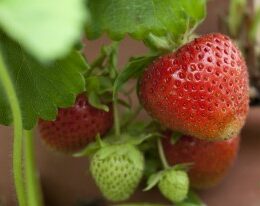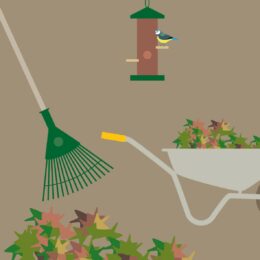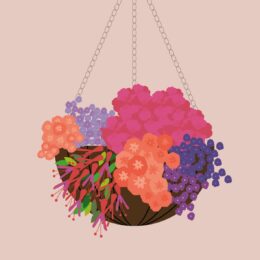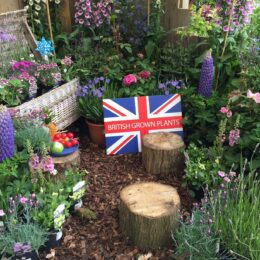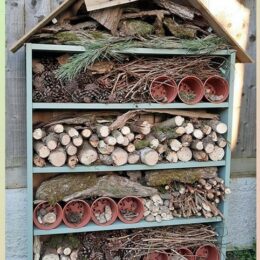During the summer months, flower beds will become a riot of colour, whilst containers and hanging baskets should be overflowing with beautiful blooms. Summer bedding plants can instantly lift a dull spot in the garden but in order to get the best out of your plants they will need more care and maintenance, especially during particularly hot and dry weather.
To help get the most out of your summer bedding plants, here are some top tips on keeping them looking good.
The key things to remember are water, feed and deadhead.
1. Water

GAP Photos 2018
During a hot dry spell, plants will need watering daily, particularly if they are in pots, baskets or a sunny border. Bear in mind that wind also drys the soil out very quickly. Water generously, it is surprising how much water is needed to reach the roots.
Optimum watering time is either early in the morning to avoid evaporation loss throughout the day or, early evening when temperatures have cooled. Don’t water too late in the evening. The plants will sit in water overnight because they won’t draw up the water until the following morning, potentially causing the roots to rot.
Water at the base of the plant where possible, if you wet the leaves, especially when it’s sunny it can cause the water droplets to magnify the sunlight, scorching the leaves.
Try not to allow containers and baskets to completely dry out. If they do become very dry, then water a little bit at a time to allow the water to soak in rather than run straight through.
Use a watering can for pots and containers or hose with a trigger gun attachment for watering larger beds and borders. There are many devices that can be used to aid watering such as a sprinkler, an irrigation system or automatic watering controllers. A waterbutt is an economical and environmentally friendly water resource especially in times of drought (although during long spells of rainfall they do run dry)..
Applying a mulch of organic matter over soil will supply your plants with additional nutrients and help with water retention. Using a water storing gel when planting will help retain water around the roots, this is particularly useful in hanging baskets or small containers.
Extra useful tips for very hot and dry weather:
If you have recently purchased plants, they will dry out and perish very quickly – water them thoroughly and get them planted into the ground or larger container as soon as possible.
Placing pots closely together in groups in a shaded area will increase the humidity around those plants and reduce need for watering.
Cutting back a plant’s foliage can reduce its need for water. So if a plant looks like it is struggling you could cut a third of the leaves back to help it out.
Hozelock also has an article about saving water in the garden including informative top tips on how to use their products to ‘water wisely’.
2. Feed

GAP Photos
In order to guarantee the best results you will have to feed your plants regularly throughout summer.
Most compost for bedding will already contain a limited amount of fertiliser. However, within a few weeks of planting the level of nutrients will have been depleted and your plants will be hungry. You will need to add more nutrients to improve your plants flowering and encourage strong growth.
A fertiliser that contains high levels of potassium e.g. tomato feed is ideal. We also recommend Miracle-Gro to encourage good growth and more blooms ready to use liquid or dissoluble granules. This type of feed should be applied about once a fortnight.
Alternatively, an easier way to be sure your plants never go short of food is to add slow-release fertiliser to your compost. These granules will dissolve and release feed into your compost gradually over several months. Always read the instructions on the packaging to get the best results.
3. Deadheading

GAP Photos
As the flowers of bedding plants fade it is important to deadhead by pinching out the old flowers. A flowers purpose is for the eventual production of seeds for reproduction. Once the flower begins to set seed it will divert all its energy into seed production and will stop producing flowers.
By deadheading the blooms as they fade, the plant will have to redirect its energy back into the production of flowers to once again try and produce seeds. This allows a gardener to enjoy a continuous display throughout summer. In addition to encouraging plants to produce more flowers, deadheading will also help to keep your garden looking neater and tidier as faded blooms look unattractive and messy.
Summer bedding plants work hard to produce magnificent displays of flowers and can easily wear themselves out after a short time if left to their own devices. By following these simple steps you will not only ensure your plants survival but you will keep them flowering right through till the end of summer and up to the first frosts.



